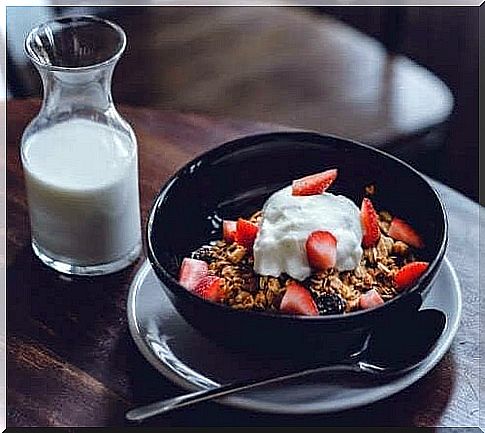What Should You Pay Attention To If You Have Diabetes?

One of the hardest parts of diabetes is knowing what to look for. There is no one-size-fits-all plan. In terms of nutrition, however, knowing how many carbohydrates you eat and how much you consume is essential to keep your glucose levels within the desired limits.
For this you need to know more about the different food groups and choose the most suitable one at any time of the day. The amount of carbohydrates you consume should also depend on your blood sugar at that time.
Keep in mind that not all carbohydrates raise your glucose levels in the same way. It all depends on the physical exertion you put in and the specific glycemic index of the foods you eat.
People’s blood sugar rises faster after eating foods with a high glycemic index than with foods with a medium to low glycemic index.
It also matters in which combination you eat something. A product with a high glycemic index is less likely to lead to high blood sugars if you also consume fats.
If you have diabetes you need to know what to eat

In order to properly plan your diet and choose the most suitable ingredients, it is necessary to know a few things. For example, you need to know which type and how many carbohydrates each product and dish has.
Vegetables
Let’s start by discussing vegetables. They are a great source of vitamins, minerals and fiber. Therefore, these are great allies in the diet of people with diabetes. There are two groups of vegetables: those that are high in starch and those that don’t.
- Corn and peas belong to the first group and you should eat them in moderation.
- Non-starchy vegetables such as Swiss chard, cauliflower, tomatoes and carrots are relatively low in carbohydrates and have a low glycemic index.
Fruit
Most fruits contain carbohydrates. Most varieties contain a lot of mono- and disaccharides. That means they have a high glycemic index. Medical professionals recommend including them in your diet because of the many nutrients they can provide.
Raspberries, strawberries, and blackberries, for example, are fairly low-carbohydrate fruits and are a good source of antioxidants and vitamins. Bananas, on the other hand, contain twice as many carbohydrates as an orange or an apple.
However, dried fruit has a much higher carbohydrate content. That’s because the water has evaporated. As a result, the end product contains much more carbohydrates. It is therefore very important to know how much of a product from this group you can eat.
Let’s take raisins as an example. 2 tablespoons of raisins provide about 15 grams of carbohydrates. That is as much as a bowl of grapes (125 grams).
Cereals
Grains such as wheat, rice, oats and products made from them such as flour are the main sources of carbohydrates. That is why it is very important to limit the amounts you eat.
You should also pay attention to the degree of processing of the product. Preferably opt for whole-grain cereals and whole-wheat flour. These are more nutritious and have a lower glycemic index.
If you’re doing everything you can to maintain your blood glucose levels, pay close attention. Avoid eating ultra-processed foods and products made with refined flours on a regular basis. These often contain large amounts of added sugar.
Tips you should know if you have diabetes

There are a few things you need to do to control your diabetes and its symptoms. One of these is thinking about your diet. You should also consider what are good choices for you. Below we list some things to keep in mind:
- Plan a daily menu in advance. Calculate how many carbohydrates each serving provides for each dish you include.
- Make a list of “acceptable ingredients” for grocery shopping. Buy these products in advance so that you have them on hand when you start cooking.
- If you are still hungry after eating, have a salad. Choose a vegetable salad with a lot of low-carbohydrate products. Use a low-carb, sugar-free dressing. You will feel more full while still keeping your carbohydrate intake low.
- Choose whole grain products instead of highly refined products. Check labels to make sure the first ingredient on the list is a whole grain product.
The goal is to replace ingredients with a higher glycemic index with products with a low index. There are many good substitutes to be found. For example, you can replace regular white rice with brown rice. It has a lower glycemic index.
Measuring is knowing
If you have diabetes, you should measure your glucose levels before every meal. That way you can determine how many carbohydrates you should eat at that moment. You can also inject the right amount of insulin.
You can use traditional glucose meters for this. New technologies are now also available that can make living with diabetes and determining your blood sugar much easier.
There are now continuous glucose meters that measure your blood sugar level via a sensor in your arm or abdomen. These meters can send the information directly to your mobile phone. You no longer have to do finger pricks. Unfortunately, these new technologies are often not reimbursed.
Things to consider if you have diabetes
Finally, we advise you to always consult your doctor. This is necessary before making any changes to your diet. They should be able to tell you why some options are better than others. This depends, among other things, on your specific needs.
However, the more attention you pay to what you eat, the easier it is to make any corrections and adjustments. Even if you have diabetes, you can live a healthy life without going hungry!









